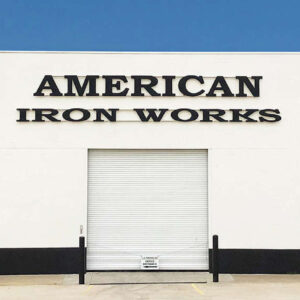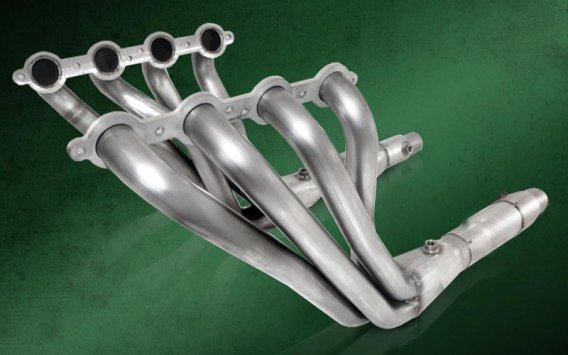
Footwear designed for occupational settings, characterized by a completely black color scheme, provides a practical and professional appearance suitable for various work environments. This type of footwear often prioritizes safety features like slip-resistant soles and composite toes, while also considering comfort for extended wear.
Dark-colored, professional footwear contributes to a polished and unified look in many workplaces. The absence of distracting colors or patterns allows for a neutral presentation, aligning with dress code requirements and projecting an image of competence. Historically, simple, durable footwear has been essential for labor, and this legacy continues in contemporary professional settings where practicality and safety remain paramount. Choosing appropriate footwear can improve workplace safety, reducing the risk of slips, trips, and other foot-related injuries.
This article will explore specific features, benefits, and selection criteria for appropriate occupational footwear. It will also cover maintenance, relevant safety standards, and address common questions regarding footwear choices in professional environments.
1. Safety Features
Appropriate safety features are paramount in occupational footwear, directly impacting worker well-being and productivity. Inherently, all-black work sneakers can incorporate various protective elements, mitigating workplace hazards and ensuring a secure work environment. Understanding these features is crucial for informed footwear selection.
-
Protective Toe Caps
Reinforced toe caps, often composed of steel or composite materials, safeguard toes from impact and compression hazards. Steel toes offer robust protection in heavy-duty environments, while composite alternatives provide lighter weight and non-metallic construction, beneficial in specific industries like electrical work. Choosing appropriate toe protection depends on the specific workplace hazards.
-
Slip-Resistant Outsoles
Specialized outsole patterns and materials enhance traction on various surfaces, reducing the risk of slips, trips, and falls. Deep treads and slip-resistant rubber compounds are crucial for maintaining stability in environments prone to spills or wet conditions, such as kitchens or outdoor worksites.
-
Puncture-Resistant Midsoles
Protective layers within the midsole shield the foot from sharp objects like nails or glass. These layers, often composed of steel or composite materials, prevent penetration through the sole, reducing the risk of foot injuries in environments where sharp debris is present, like construction sites or industrial settings.
-
Electrical Hazard Protection
Specialized footwear construction protects against electrical shocks. Non-conductive materials and reinforced soles insulate the wearer from electrical currents, crucial in environments with potential electrical hazards. This feature is vital for electricians and those working around live wires.
By understanding the interplay of these safety features, workers can select all-black work sneakers appropriate for their specific occupational needs. Prioritizing these elements contributes to a safer work environment, reducing the risk of injuries and promoting overall well-being.
2. Comfort and Fit
Comfort and fit are critical factors influencing worker productivity, safety, and overall well-being. Ill-fitting or uncomfortable footwear can lead to fatigue, discomfort, and potential injuries. In the context of all-black work sneakers, prioritizing comfort and fit ensures sustained wear throughout long shifts, contributing to a safer and more productive work environment.
-
Cushioning and Support
Adequate cushioning absorbs impact and reduces stress on joints, especially during prolonged standing or walking. Features like padded insoles, shock-absorbing midsoles, and arch support contribute to enhanced comfort and reduce foot fatigue. For example, memory foam insoles conform to the foot’s shape, providing personalized support and cushioning. Effective cushioning and support are crucial for maintaining comfort throughout a workday.
-
Breathability and Moisture Management
Proper ventilation and moisture-wicking materials prevent excessive sweating and maintain a comfortable foot environment. Breathable linings and moisture-wicking fabrics help regulate temperature and reduce the risk of blisters and foot odor. This is particularly important in demanding work environments where workers are physically active or exposed to varying temperatures.
-
Proper Sizing and Fit
Accurate sizing and appropriate width ensure a snug, secure fit without constriction. Properly fitted footwear minimizes friction, reducing the risk of blisters and discomfort. Consider factors like foot shape, arch type, and any pre-existing foot conditions when selecting the correct size and fit. Trying on footwear and ensuring ample toe room and a secure heel fit is crucial.
-
Flexibility and Range of Motion
Sufficient flexibility allows for natural foot movement, promoting comfort and reducing strain. Flexible outsoles and uppers enable comfortable movement, particularly in roles requiring frequent bending, squatting, or climbing. This flexibility also enhances balance and stability, contributing to overall workplace safety.
Selecting all-black work sneakers that prioritize these comfort and fit aspects contributes significantly to worker satisfaction, safety, and productivity. By addressing these factors, employers can create a more comfortable and supportive work environment, leading to enhanced worker well-being and reduced risk of work-related foot injuries.
3. Durability
Durability is a critical factor in work footwear, directly impacting its lifespan and cost-effectiveness. In demanding work environments, all-black work sneakers are subjected to considerable wear and tear, making durability a crucial consideration. Durable construction ensures the footwear can withstand the rigors of daily use, providing reliable protection and long-term value. For instance, reinforced stitching, robust materials, and quality construction techniques contribute to extended footwear lifespan. A delivery driver constantly in and out of a vehicle requires durable footwear to withstand repeated abrasion and flexing. Similarly, a construction worker needs footwear that can endure contact with rough surfaces and potential impacts. Understanding the importance of durability in these contexts allows for informed purchasing decisions, minimizing replacement costs and ensuring consistent protection.
Several factors contribute to the overall durability of all-black work sneakers. High-quality materials, such as abrasion-resistant leather or durable synthetic fabrics, play a significant role in withstanding daily wear. Reinforced stitching in high-stress areas, like the toe cap and heel counter, further enhances the structural integrity of the footwear. The construction method, whether it’s cemented, Goodyear welted, or injection molded, also influences the overall durability and longevity of the shoe. Considering these factors allows for a comprehensive assessment of footwear durability. Choosing footwear constructed with durable materials and robust construction techniques ultimately reduces long-term costs and ensures consistent performance in demanding work environments.
Prioritizing durability in all-black work sneakers offers significant practical advantages. Extended footwear lifespan translates to reduced replacement costs, offering long-term value. Durable construction also ensures consistent protection against workplace hazards, contributing to worker safety. Furthermore, well-maintained, durable footwear projects a professional image, aligning with workplace standards. Recognizing the long-term benefits of durable footwear contributes to informed purchasing decisions, ultimately benefiting both the worker and the employer.
4. Slip Resistance
Slip resistance is a critical safety feature in all-black work sneakers, directly impacting worker safety and accident prevention. Slips, trips, and falls constitute a significant portion of workplace accidents, often resulting in injuries and lost productivity. Effective slip-resistant footwear mitigates these risks, contributing to a safer work environment. The connection between slip resistance and appropriate footwear is particularly relevant in occupations where spills, wet surfaces, or uneven terrain are common. For example, a healthcare worker navigating a hospital floor with potential spills requires footwear with high slip resistance. Similarly, a kitchen staff member working in a fast-paced environment with frequent spills needs footwear designed to maintain traction on wet surfaces. Understanding this connection allows for informed footwear selection, prioritizing safety in specific occupational hazards.
Several factors influence the slip resistance of all-black work sneakers. Outsole design plays a crucial role, with factors like tread pattern, depth, and geometry influencing traction. Deeper, wider treads with multi-directional patterns generally offer enhanced grip on various surfaces. The material composition of the outsole also impacts slip resistance. Specialized rubber compounds formulated for high traction on wet or oily surfaces are essential for maintaining grip in challenging environments. Additionally, the condition of the outsole affects its performance. Worn-out outsoles with reduced tread depth significantly compromise slip resistance, increasing the risk of accidents. Regular inspection and timely replacement of worn footwear are crucial for maintaining optimal slip resistance and ensuring worker safety.
Prioritizing slip-resistant footwear demonstrates a commitment to workplace safety and reduces the risk of accidents. Appropriate footwear selection, considering specific occupational hazards and environmental factors, is essential for maximizing slip resistance and minimizing risks. Furthermore, regular maintenance, including cleaning and timely replacement of worn footwear, ensures sustained slip resistance and contributes to a safer work environment. Recognizing the importance of slip resistance and its impact on worker safety promotes a proactive approach to accident prevention and fosters a culture of safety in the workplace.
5. Professional Appearance
Maintaining a professional appearance is often a workplace requirement, influencing perceptions of competence and credibility. Footwear choices contribute significantly to this overall presentation, and all-black work sneakers offer a versatile solution for achieving a polished and professional look while prioritizing practicality and safety.
-
Versatility and Neutrality
Black footwear provides a neutral base, complementing a variety of uniform colors and styles. This versatility makes all-black work sneakers suitable for diverse work environments, from healthcare to hospitality, where specific dress codes or uniform requirements may exist. The neutral color avoids clashing with other attire, maintaining a cohesive and professional image. For instance, in a healthcare setting, black sneakers complement scrubs of various colors, maintaining a professional appearance without distracting from the clinical environment.
-
Cleanliness and Maintenance
Maintaining a clean and polished appearance is essential for professional footwear. All-black sneakers, while prone to showing scuffs and dirt, offer the advantage of easy cleaning and maintenance. Regular cleaning with appropriate shoe care products helps maintain their professional appearance. A polished appearance conveys attention to detail and professionalism, reflecting positively on the individual and the workplace. For example, a restaurant worker maintaining clean, all-black footwear contributes to the overall image of cleanliness and professionalism within the establishment.
-
Compliance with Dress Codes
Many workplaces implement dress codes to maintain a professional and consistent image. All-black work sneakers often align with these dress codes, offering a practical yet professional footwear solution. Compliance with dress code policies demonstrates respect for workplace standards and contributes to a unified team presentation. This is particularly relevant in industries like hospitality or customer service where employees regularly interact with the public. Adhering to dress code policies through appropriate footwear choices ensures a consistent and professional brand image.
-
Modern Professionalism
Contemporary workplaces increasingly embrace a more relaxed approach to professional attire. All-black work sneakers, while maintaining a professional look, offer enhanced comfort and practicality compared to traditional dress shoes. This modern approach to professional footwear recognizes the need for both comfort and style in demanding work environments. For instance, a tech company might embrace a more casual dress code, allowing for all-black sneakers while maintaining a professional and modern aesthetic. This adaptability reflects evolving workplace norms and priorities.
By considering these facets, selecting appropriate all-black work sneakers contributes to a polished and professional appearance while ensuring practicality, safety, and compliance with workplace standards. This balance between professionalism and functionality makes all-black work sneakers a versatile footwear solution in contemporary work environments.
Frequently Asked Questions
This section addresses common inquiries regarding all-black work sneakers, providing clarity on selection, maintenance, and usage.
Question 1: How does one select the appropriate size and fit for all-black work sneakers?
Accurate sizing is crucial for comfort and safety. It is recommended to measure feet at the end of the day when they are typically largest. Consulting size charts provided by manufacturers and considering individual foot shape and arch type are crucial. When trying on footwear, ensure ample toe room and a secure heel fit to prevent discomfort and blisters.
Question 2: What maintenance procedures are recommended for all-black work sneakers to ensure longevity and preserve appearance?
Regular cleaning with appropriate shoe care products helps maintain the appearance and extend the lifespan of the footwear. Removing dirt and debris after each use prevents buildup and potential damage to materials. Allowing footwear to air dry completely after cleaning prevents moisture buildup and potential odor. Storing footwear in a cool, dry place away from direct sunlight helps preserve materials and prevent premature wear.
Question 3: Are all-black work sneakers suitable for all occupational settings?
Suitability depends on specific workplace hazards and dress code requirements. While versatile, all-black work sneakers may not provide adequate protection in environments with extreme hazards like chemical exposure or extreme temperatures. Assess workplace risks and consult relevant safety regulations to determine appropriate footwear choices.
Question 4: What are the key differences between steel-toe and composite-toe all-black work sneakers?
Steel-toe footwear offers robust protection against impact and compression but can be heavier and conduct heat or cold. Composite-toe alternatives provide similar protection with lighter weight and non-metallic construction, beneficial in environments with electrical hazards or where metal detectors are used.
Question 5: How frequently should work sneakers be replaced?
Replacement frequency depends on usage, wear and tear, and specific workplace demands. Regularly inspect footwear for signs of wear, like worn outsoles, damaged toe caps, or compromised stitching. Replace footwear promptly when it no longer provides adequate protection or support.
Question 6: Where can reliable information on safety standards for occupational footwear be found?
Consult relevant regulatory bodies, such as OSHA (Occupational Safety and Health Administration) in the United States, or equivalent organizations in other regions, for comprehensive information on safety standards and certifications for occupational footwear.
Understanding these frequently asked questions allows for informed decisions regarding the selection, maintenance, and usage of all-black work sneakers, contributing to workplace safety, comfort, and professional appearance. Addressing these common concerns empowers individuals to make appropriate footwear choices aligned with their specific occupational needs.
The subsequent section will explore specific product recommendations and comparisons, assisting in the selection process.
Tips for Selecting and Maintaining All-Black Work Sneakers
This section offers practical guidance for choosing and maintaining appropriate footwear for professional environments.
Tip 1: Prioritize Safety Features: Evaluate potential workplace hazards and select footwear with appropriate safety features. Steel-toe caps offer robust protection against impact, while composite toes provide a lighter, non-metallic alternative. Slip-resistant outsoles are crucial for preventing slips and falls, especially in environments with wet or slippery surfaces. Puncture-resistant midsoles offer protection against sharp objects, vital in construction or industrial settings. Electrical hazard protection is essential for those working around live wires.
Tip 2: Ensure Proper Fit: Ill-fitting footwear can lead to discomfort and potential injuries. Measure feet accurately and consult manufacturer size charts. Consider factors like foot shape, arch type, and any pre-existing foot conditions. Ensure ample toe room and a secure heel fit when trying on footwear.
Tip 3: Choose Durable Materials: Opt for footwear constructed with durable materials like high-quality leather or abrasion-resistant synthetics. Reinforced stitching and robust construction techniques contribute to extended footwear lifespan. Consider the specific demands of the work environment when selecting materials.
Tip 4: Maintain Regularly: Regular cleaning and maintenance preserve the appearance and extend the lifespan of footwear. Clean footwear after each use, removing dirt and debris. Allow footwear to air dry completely to prevent moisture buildup. Store footwear in a cool, dry place away from direct sunlight.
Tip 5: Replace Worn Footwear Promptly: Worn-out footwear compromises safety and comfort. Regularly inspect footwear for signs of wear, such as worn outsoles, damaged toe caps, or compromised stitching. Replace footwear promptly when it no longer provides adequate protection or support. Delayed replacement can lead to increased risk of workplace accidents and injuries.
Tip 6: Adhere to Workplace Dress Codes: Ensure footwear choices comply with workplace dress code policies. All-black work sneakers often meet these requirements, offering a practical and professional solution. Adhering to dress codes demonstrates respect for workplace standards and contributes to a unified professional image.
Tip 7: Consider Comfort Features: Prioritize comfort features like cushioning, arch support, and breathability, especially for roles requiring prolonged standing or walking. Adequate cushioning reduces foot fatigue and enhances overall comfort, contributing to increased productivity and well-being.
Tip 8: Research and Compare Products: Before purchasing, research various brands and models, comparing features, pricing, and user reviews. Consulting online resources and seeking recommendations from colleagues or industry professionals can aid in informed decision-making.
By following these tips, individuals can make informed decisions regarding footwear choices, prioritizing safety, comfort, and professional appearance in the workplace. Careful consideration of these factors contributes to enhanced well-being, reduced risk of injuries, and a more productive work environment.
The following section will provide a concise conclusion, summarizing key takeaways and reinforcing the importance of appropriate footwear choices.
Conclusion
Appropriate footwear choices are paramount for workplace safety, comfort, and professionalism. This exploration of all-black work sneakers has highlighted the critical interplay of safety features, comfort considerations, durability, slip resistance, and professional appearance. Understanding these factors empowers informed decision-making, enabling selection of footwear tailored to specific occupational needs and hazards. Prioritizing these elements contributes significantly to a safer and more productive work environment.
Investing in appropriate footwear demonstrates a commitment to worker well-being and long-term productivity. Careful consideration of footwear features, adherence to safety standards, and regular maintenance ensure optimal performance and extended lifespan. Ultimately, prioritizing appropriate footwear choices fosters a culture of safety and professionalism within any workplace.



